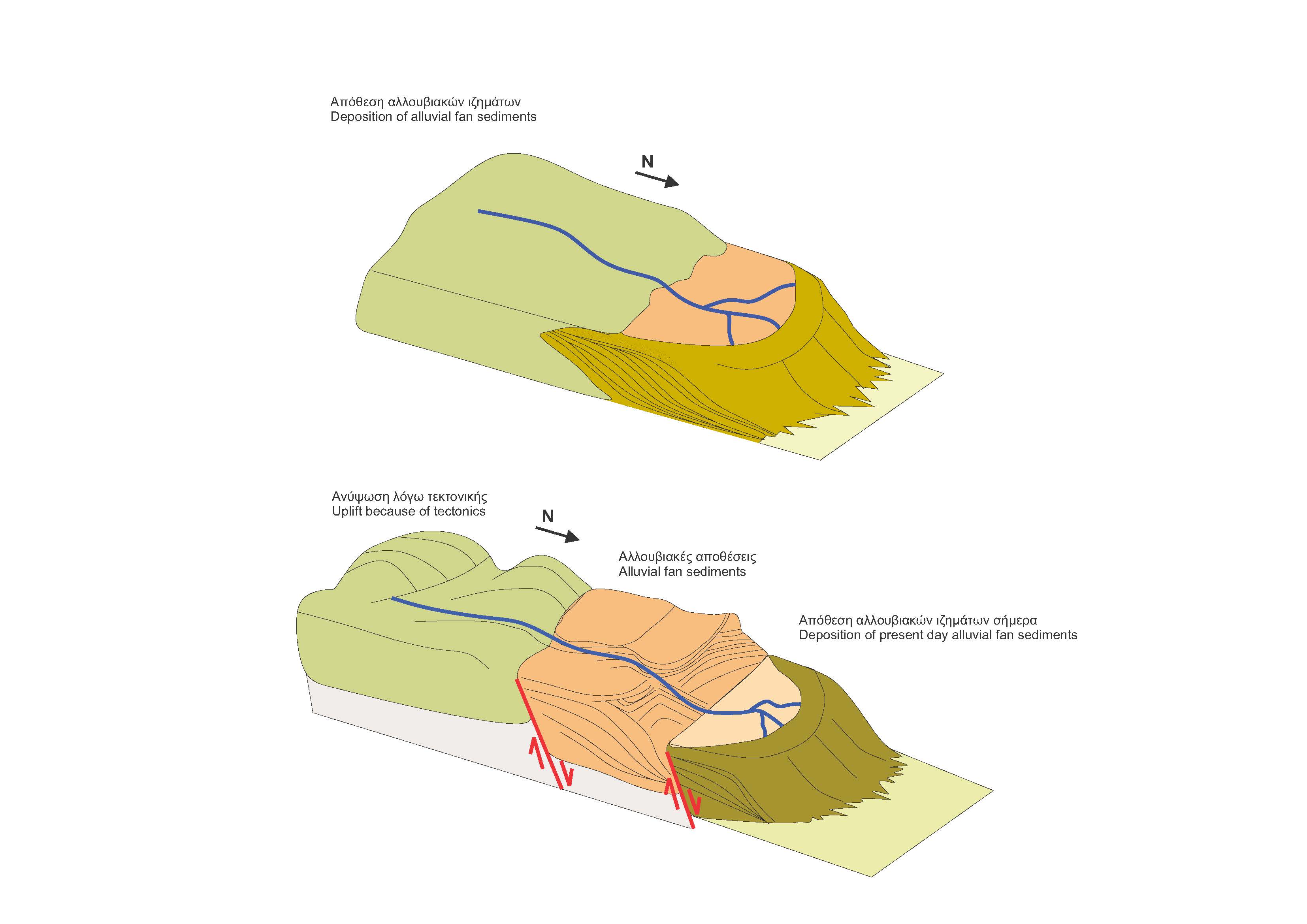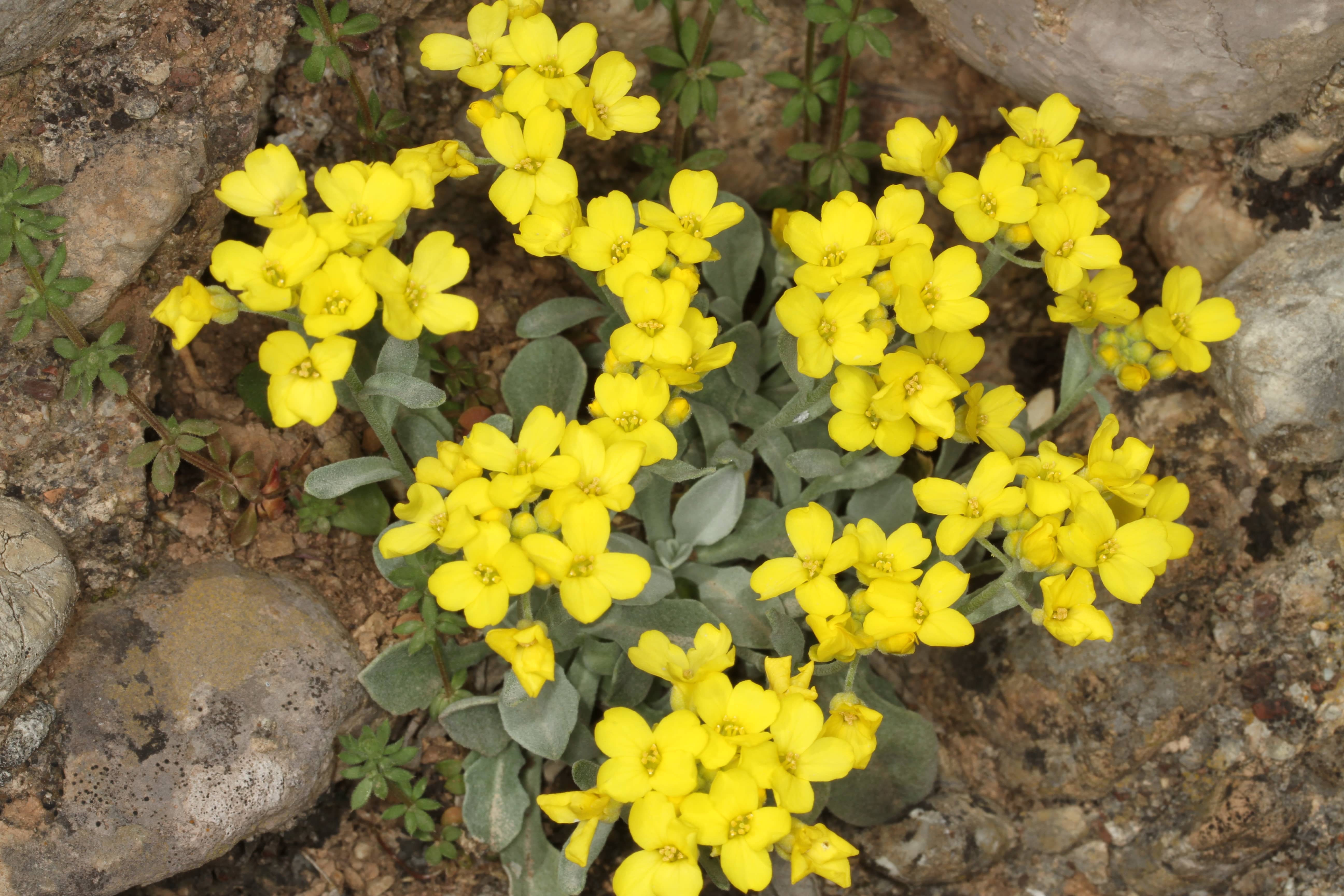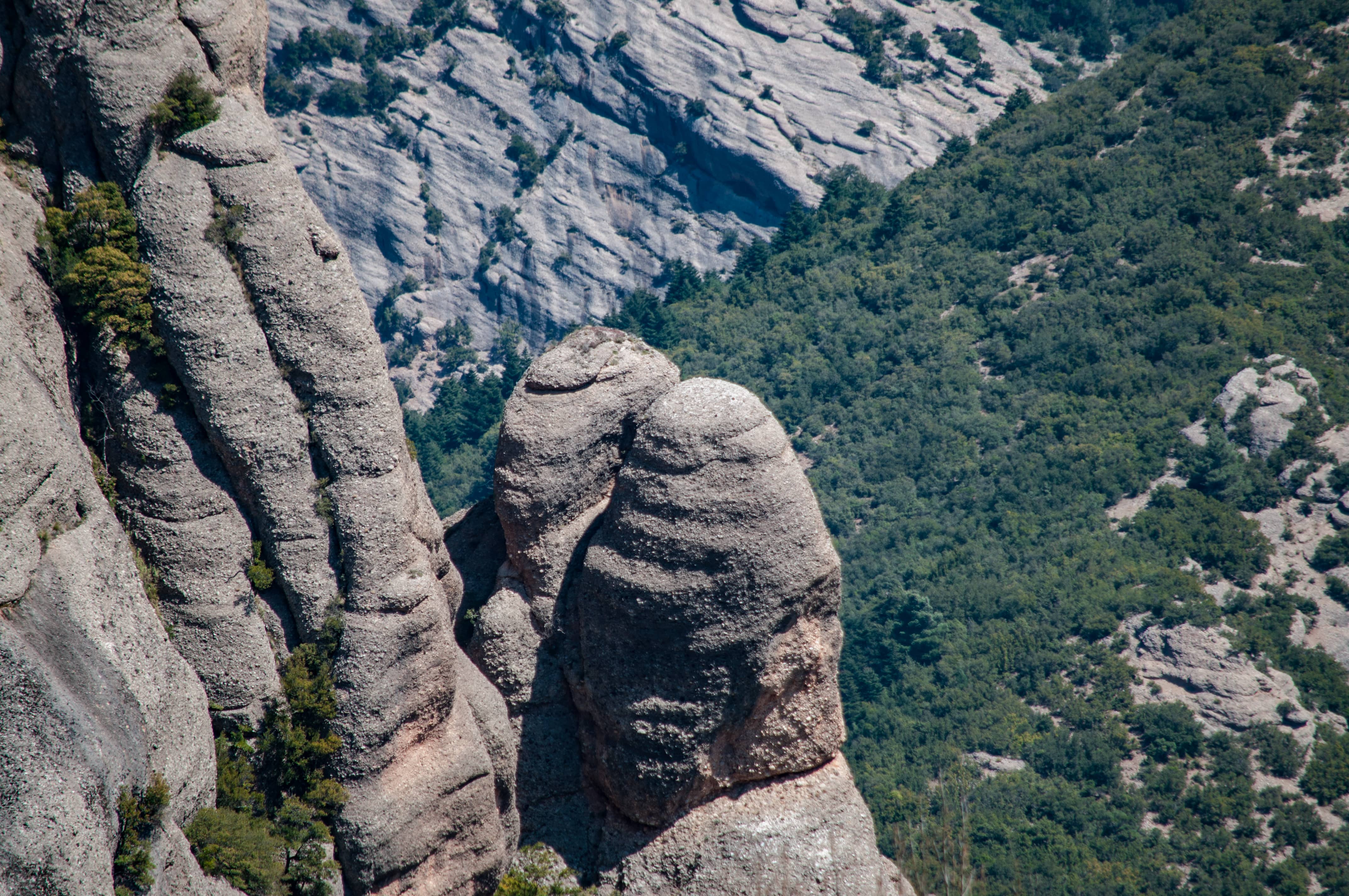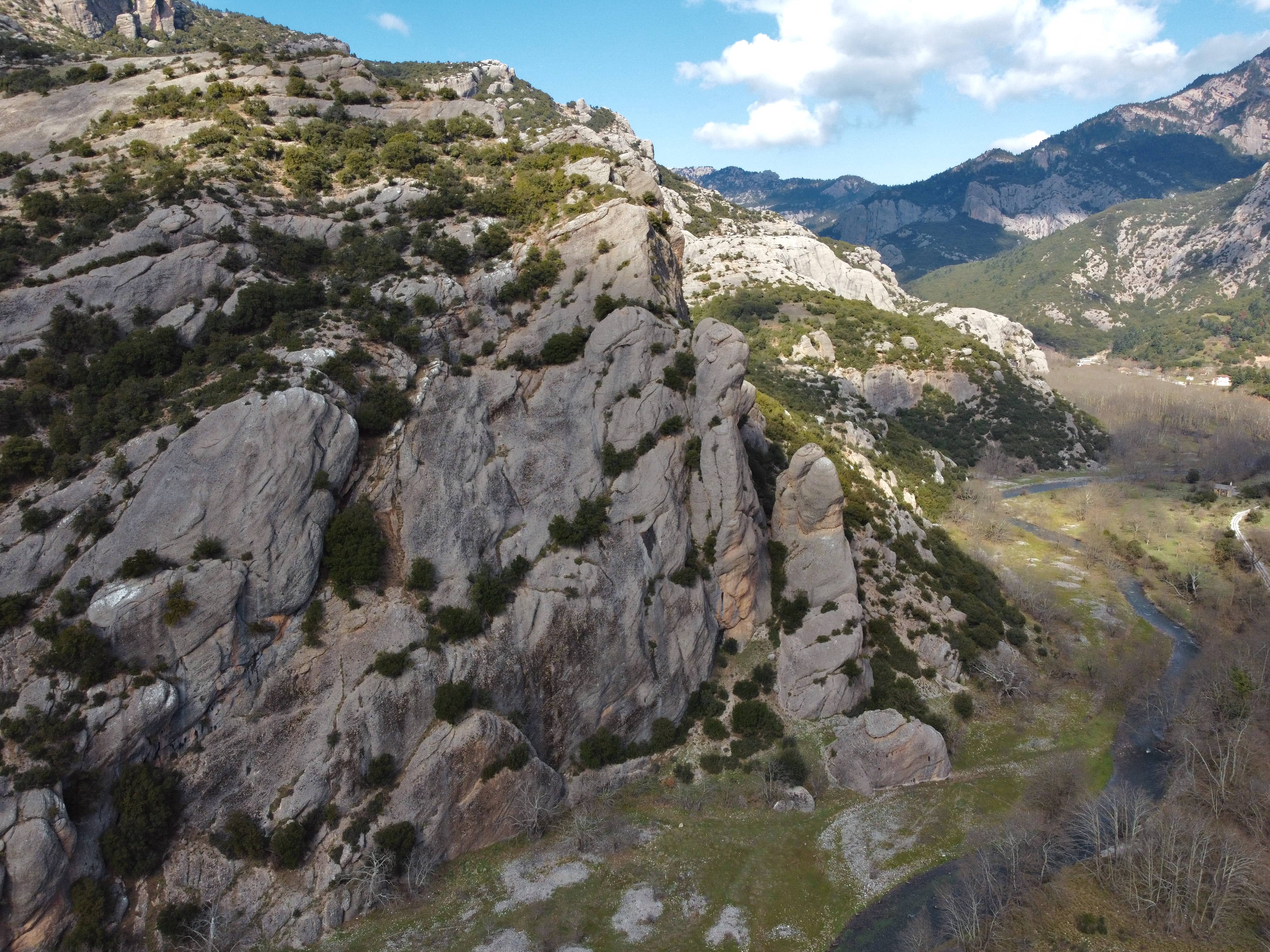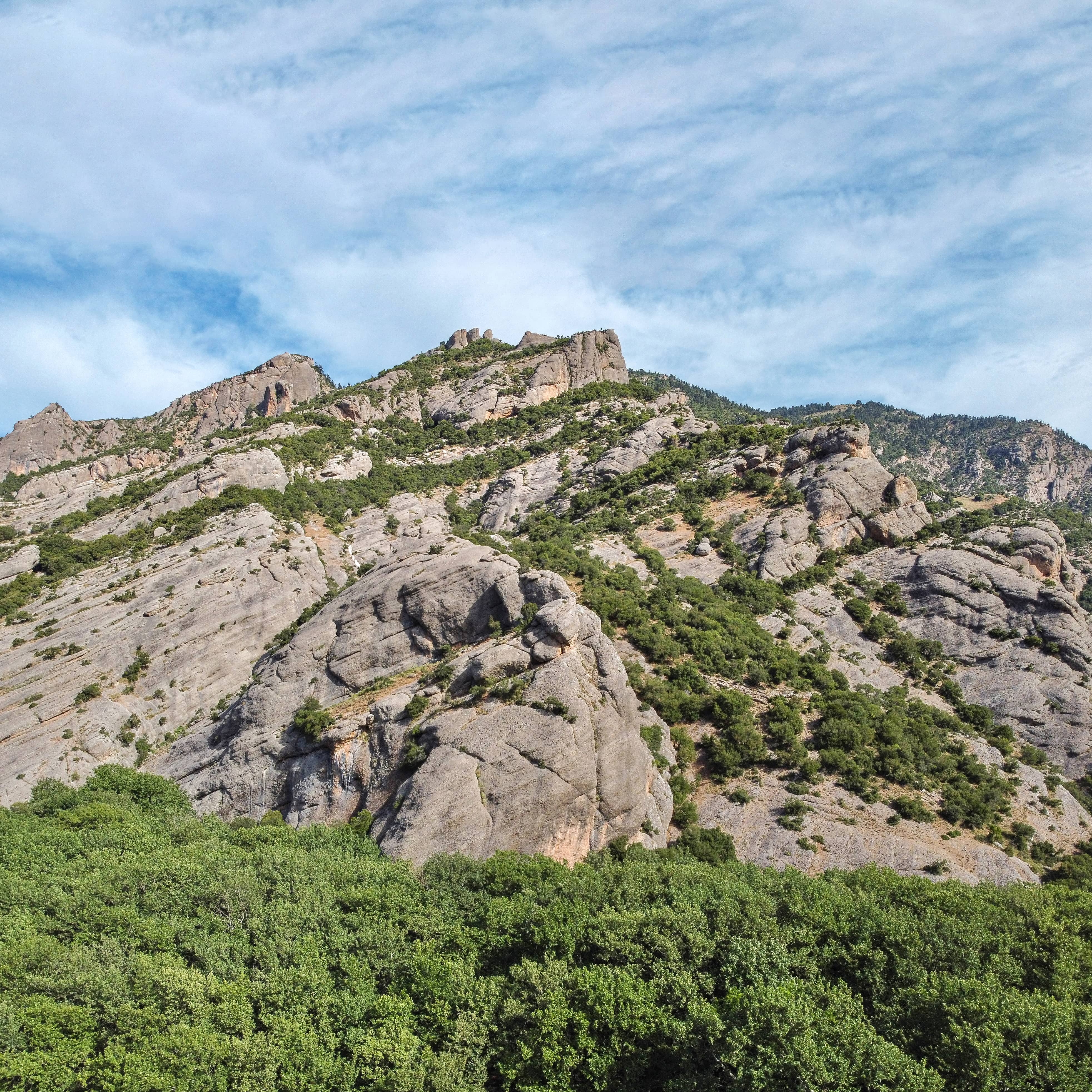THE POWER OF WATER AND WIND
High steep conglomerate cliffs sculpted by wind and rain water create a unique landscape near Kerpini village. West of the geosite in 5km distance, there is the Kerpini village. It is a village with a glorious history.
Geodiversity
But how were these rocks formed?
After the Middle Pleistocene (0.8 million years before) and because of the formation of the Corinth rift, the wider area of the geopark was uplifted and fragmented (broken). Big faults were formed. This procedure ended up with the formation of a series of half-grabens (a basin with one of its sides smaller than the other) located at a system of uplifted and inclined blocks that tilt to the north. On these blocks fluvial to lacustrine sediments (cobbles) of Lower-Middle Pliocene age (5.333-3.600 million years) were accumulated, then these sediments were uplifted at an altitude of several hundred meters due to fault activity. One of these big faults –Kerpini fault with an E-W direction is located in the nearby area of Rogoi village, approximately 3 km north of Kerpini conglomerates geosite. Conglomerates consist of cobbles (decreasing in size from the base to the roof) which have been welded together and, after being uplifted by tectonics, eroded by wind and water and today give the impression of a sculpture.
Biodiversity
The Geosite is located within the Protected Area “FARANGI VOURAIKOU” (GR2320003) and the Special Protection Area (SPA) for avifauna “OROS CHELMOS (AROANIA)-FARANGI VOURAIKOU KAI PERIOCHI KALAVRYTON” (GR2320013) of the Natura 2000 network. Crossing the gorge, we meet a significant number of Peloponnesian endemic plant taxa, such as Dichoropetalum achaicum etc, as well as a great number of Greek endemics, such as Stachys graeca etc. Important for the area is the butterfly Pseudophilotes bavius. Freshwater fish found in Vouraikos River include Chamosourtis (Barbus peloponnesius, endemic to Western Greece), as well as the European eel (Anguilla anguilla while in riparian sites of the area, the otter (Lutra lutra).

